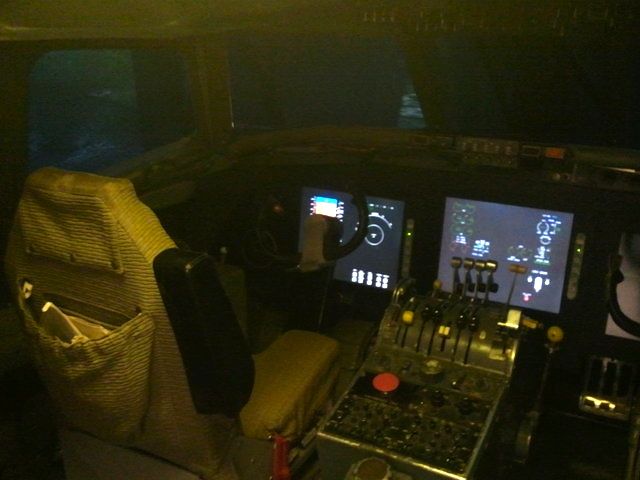Monday, April 9th, 2012...2:27 pm
“Toronto, we have a problem”: U of T’s Part in the Apollo 13 Rescue Mission
Remember this scene from Apollo 13?
Well, it turns out shortly after this heated moment it was none other than the University of Toronto Institute of Aerospace Studies (UTIAS) that was contacted to save the day. Yes! You heard me – U of T played a major part in the Apollo 13’s safe return to Earth.
For those of you who haven’t seen the film (and don’t know the history), on April 13th, 1970, an oxygen tank on-board the Apollo 13 spacecraft exploded and threw a large kink into the plan to land on the moon. As a result, the original mission had to be aborted and NASA was forced to figure out how to safely get the crew home.
Comprised of three parts: a Command Module (for re-entry in the Earth’s atmosphere), a Service Module (pretty badly damaged by the explosion) and a lunar module (that was intended to be used on the moon), the Apollo 13 needed to be used in ways not originally planned for. Coming back to the earth, the craft would have to separate from the Lunar module, which wouldn’t survive re-entry into the Earth atmosphere – cue: “Toronto, we have a problem”.

UTIAS answers the call and gets to work to save Apollo 13. Photo courtesy of: AIAC
It turns out that: “UTIAS had been contacted to help with a crucial calculation on the correct pressure required to separate the entry module from the damaged spacecraft, because the two could not be separated using the mission profile… Their study and calculations provided a safe means to utilize pressure in the tunnel area between the Command & Service Module (CSM) and the Lunar Module (LM) to assure safe separation of the LM without damaging the hatch” (Canadian Air & Space Museum).
Ben Etkin, a professor for UTIAS at the time, recalls the experience: “We assumed that they had called other experts as well, but it turned out that we were the only group that they had contacted! After Apollo 13 returned safely to Earth, we received a letter from Grumman Aerospace thanking us for our participation and stating that our estimates had been the main quantitative information used to separate the components” (Aerospace Industries Association of Canada).
And how did I find this out? Luckily I had the privilege of visiting the Institute for Aerospace Studies a few weeks ago with the Parkdale Peer Mentorship Program. Fascinated by the flight-simulators and other research that goes on, I wanted to find out more information! And look what a little research found me – U of T, you’ve surprised me again!
If you’re interested in the Institute, and perhaps would enjoy a tour yourself, send an email to Joan Dacosta at dacosta@utias.utoronto.ca


Comments are closed.